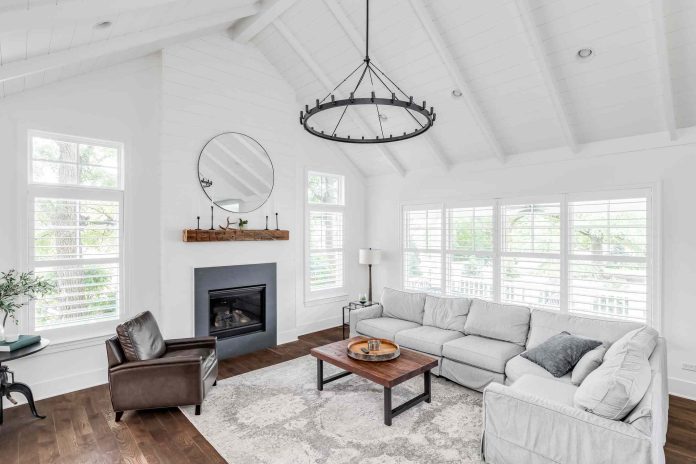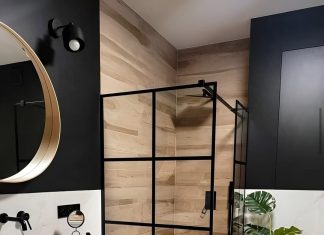Key Points
- Minimalism and beige interiors feel stale—layered, lived-in spaces are in.
- Ditch animal prints, arched mirrors, and matching furniture for eclectic, personal pieces.
- Skip glam and farmhouse looks; warmth and individuality lead 2026 design.
As we enter the new year, there’s bound to be new design trends that take over—and ones we leave behind. Social media can especially be a coin toss with trends, because while it gives us access to fresh ideas, it can also create concepts for shock value or short-term appeal (think: cluttercore).
Of course, trends shouldn’t dictate your entire taste since it’s ultimately a personal preference. However, they can offer style inspiration—especially if you’re looking to refresh your abode in the new year.
So, which trends are designers ready to let go of in 2026? Here, they share six tacky trends they don’t want to see in the new year—and what they’re excited to try instead.
Meet the Expert
- Kathy Kuo is the CEO and Founder of Kathy Kuo Home.
- Brittny Button is the founder and principal designer of Button Atelier.
- Bilal Rehman is an interior designer and the CEO of Bilal Rehman Studio.
Minimalist Design
The Spruce / Jason Donnelly
Minimalism already saw a decline in popularity in 2025, and many designers are keen to leave it behind again in 2026.
“I prefer to avoid minimalist interiors that are pared-back, refined, and centered around a mostly-white color palette,” says interior designer Kathy Kuo. “These kinds of spaces have had their day in the sun, but I now tend to find them a bit stark and uncomfortable.”
Her preferred approach?
“I believe the most warm, welcoming homes feel collected, layered, and sensorial, highlighting a mix of materials, textures, and personal keepsakes meaningful to the people who live there,” Kuo says.
Want more design inspiration? Sign up for our free daily newsletter for the latest decor ideas, designer tips, and more!
Animal Prints
Dana Hoff / Getty Images
As minimalist design took a back seat last year, more maximalist trends rose in popularity—including animal prints. However, while animal prints have been used for centuries, there is a point where they can get excessive.
“[It] reads as really visually loud in a room and ends up making the interior feel cluttered and overworked,” says interior designer Brittny Button.
In 2026, Button hopes to see patterns incorporated through different mediums like stripes, florals, or herringbone. She’s also leaning toward organic textures from wood, raw stone, and rattan.
Beige-on-Beige
FollowTheFlow / Getty Images
In the same vein of minimalist design, the beige-on-beige look took hold of interiors in the last few years.
“It started as calm and clean, but it’s become soulless,” Rehman says. “Spaces are meant to tell stories, not feel like a filtered Pinterest board. When everything is one tone and one texture, the room loses all character.”
Still, that doesn’t mean you have to throw away neutrals entirely—just be sure to add depth.
“Think: textured plaster walls, aged wood, exotic marbles, and soft contrast,” Rehman elaborates. “I want to see minimalism evolve into something more tactile and emotional, something that feels lived-in, not staged.”
Matching Furniture
tulcarion / Getty Images
Furniture sets are a quick and easy way to get your place set up. However, they can end up looking more cookie-cutter than curated.
“Gone are the days when every piece of furniture needs to match perfectly—an aesthetic that feels cold, lackluster, and outdated,” says Kuo.
So to create more warmth, the designer suggests mixing materials and silhouettes.
“I might pair a square burl wood side table, round marble coffee table, and woven rattan console table, all in the same living room,” Kuo notes. “This kind of eclectic, mismatched look infuses a room with character, personality, and visual interest, creating a look that’s distinctly yours.”
Arched Mirrors with Abstract Art
towfiqu ahamed / Getty Images
Those oversized arched mirrors and abstract prints we saw in almost every apartment on TikTok? ”
They’ve had their moment,” Rehman says. “They’re not bad, just overdone. When design becomes too copy-and-paste, it loses any sense of identity.”
Instead, the designer is ready to see more pieces with meaning in 2026—like vintage mirrors, locally made ceramics, and original or custom art.
“Things that feel like you,” Rehman says. “I love when a room feels personal and collected, not shopped from the same five links on a ‘Modern Aesthetic’ board.”
Glam Furniture
Fernando Bengoechea / Getty Images
While minimalism started to lose its appeal in 2025, Button cautions going to the opposite extreme and investing in furnishings that are too shiny or gaudy.
“Opt for [simple] furniture structure with uncomplicated designs,” Button advises. “The sleek nature of these kinds of pieces has real enduring appeal.”
Modern Farmhouse Design
Aliyev Alexei Sergeevich / Getty Images
Modern farmhouse decor works great in small doses à la Joanna Gaines—but can start feeling tacky when done again and again.
“We can officially let the barn doors go,” Rehman says. “The modern farmhouse aesthetic had its time; it brought warmth and approachability, but now it’s everywhere, and it all feels the same. It’s lost the charm that made it special in the first place.”
In 2026, Rehman still wants warm rooms—but recommends a more collected approach.
“[I’d like to see] spaces layered with pieces from different time periods, materials with patina, and bold moments of color,” he says. “Rooms that feel like they’ve evolved over time, not like everything was bought in one weekend.”








